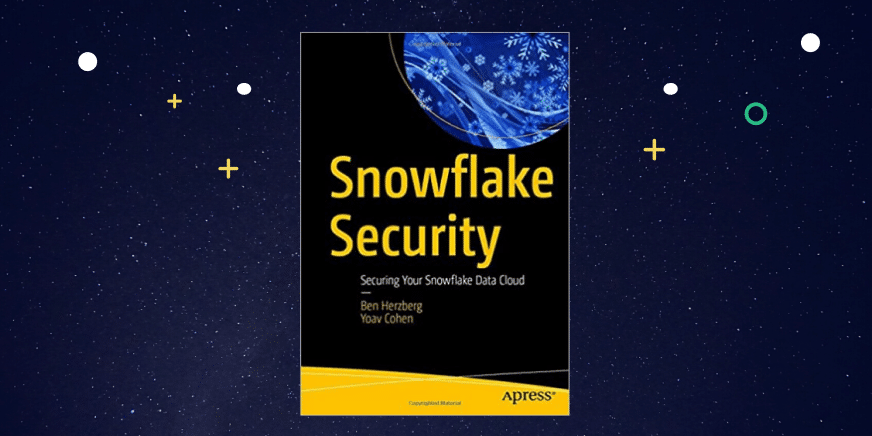For the last few years, we at Satori have been a bit obsessed with Snowflake. But hey, you can’t blame us because we’re not the only ones. Snowflake is a platform that delivers on its promise of providing a single data cloud platform to advance business needs—a very appealing promise indeed. It is a data cloud that is easy to get started with and removes a lot of the operational hassle involved in running big data operations.
Satori further enhances users’ Snowflake experience by enabling customers to have a secure, private, and well-governed Snowflake experience, without changing anything tangible on the experiential level, and with quick implementation and maintenance. This way, users can streamline access to sensitive data they store in Snowflake and implement effective security policies on top of their Snowflake.
Importantly, while we were working on our product and on understanding the needs of Snowflake users, we realized that there is a gap in users’ general knowledge. Snowflake users are primarily data engineers who have a great understanding of data operations but not necessarily a great amount of security expertise. On the other hand, security teams which use Snowflake have the security knowledge but not the Snowflake-specific practical knowledge.
At first, we attempted to start to bridge that knowledge gap by writing a
Snowflake security guide, which was then enriched by additional guides to specific topics like row-level security, roles management, dynamic masking, and more. But we felt that this was not truly enough.
Part of the
DataSecOps mindset that is central to our values is that data and security engineers should work closely together in collaboration. Our team searched for a practical book to fill this knowledge gap: both to help data engineers better understand how to secure their Snowflake platforms and to help security engineers better understand practical security functions in Snowflake (hint: there are quite a bit of security mechanisms they can employ).
Since we did not find such a book, we decided to write it. The decision to write a book was not easy; building Satori is already an intensive process, and writing a fully-fledged book alongside our work was a crazy idea. But sometimes you have to be a bit crazy and go that extra mile to make a difference. Writing the book itself became a black hole sucking in our free time, and the endeavor took the support of our beloved families and the entire Satori team.
Writing the Actual Book
Starting with an Abstract
Our book writing process began with an abstract. We initially had our basic idea and goal: writing a book to help data and security professionals gain an understanding of Snowflake’s various security capabilities. We wanted this book to be practical but to also explain the concepts and assist in prioritizing security tasks. We wanted the book to be a tool for end-to-end understanding of the topic but also a guide you can refer to while performing a specific task.
Continuing with an Outline
Once we understood our writing goal, we broke this task down into a comprehensive outline that would help us understand the different book components or chapters. Once we divided the project into smaller components, we broke it down further. For example, we knew that one of the main challenges in securing your platform is properly setting up authentication in a way that fits your business needs and security requirements. Still, as a large and daunting task, we broke this step down into the different types of authentication available in Snowflake and added technical instructions as well as security recommendations.
Publishing a Book
Deciding on the best way to publish the book was conflicting. On one hand, publishing independently would give us executive control over the entire process. On the other hand, we thought that working with an expert publisher would help us deliver the best result and, more importantly, reach a wider audience. Given that we were investing a lot of effort into this project, we wanted the book to be used by as many people as possible so they could benefit from this shared knowledge. We decided on the latter option.
We pitched the book to
APress, and after a smooth process, we had our book contract complete with deadlines and a process for delivering the book in an agile manner. To get the book ready for publication, it was time to get some help from our friends.
A Little Help From Our Friends
With the help of Susan McDermott from APress, we set up an editorial team. It was especially important for us to have technical editors who are mindful, detail-oriented, and have vast experience with the Snowflake platform itself. We suggested that the Snowflake experts from Leading Edge IT, one of Snowflake's largest integration partners, Chris Tabb, Chris Edge, and Ian Chotakoo join our editorial team. They took this challenge on with passion and were a complete blessing for the book. We even had a lot of fun in our editorial meetings.
In addition, we wanted someone to add the “big picture” aspect of the topic and tie the practical book to broader ideas and trends in the data governance and engineering worlds. We wanted someone who could zoom out and explain where this piece, our book, fits into the larger puzzle. We asked Anita Lynch, New Relic’s CDO, who has vast experience in data and specifically with Snowflake to join our project. We were really happy that she participated and wrote the foreword for our book.
Last but not least, we received some great insights and help from many people within Snowflake, including Vikas Jain, Omer Singer, Kent Graziano, Seth Youssef, Jonathan Sander, David "BigDataDave" Spezia, Felipe Hoffa, and several others. They discussed new features and several capabilities with us which allowed us to focus our efforts and ensure we stayed on track. In addition, the Snowflake team was patient and fun to work with, so our collaboration was all the more enjoyable.
Writing the Book
Having a good plan is important, but stellar execution is paramount. We began working and writing. Throughout the process, we held internal syncs between our Satori team as well as external syncs with the editorial staff. Every once in a while, we also shared our latest drafts with our friends at Snowflake and held a few progress update meetings with them. Eventually, after a lot of writing, re-writing, and a couple of unplanned items added to the book content, we had our final draft.
Wrapping It Up
Well, physically, there is a large machine somewhere that actually wraps up the book copies and binds them. But this paragraph wraps up the story of writing “Snowflake Security: Securing Your Snowflake Data Cloud”. To any professionals debating whether to make this book writing effort or not, our advice is to make sure you are okay with sacrificing a lot of time without any immediate rewards. Writing a book is a large project, but, eventually, we hope that the book can help people simplify their lives and, in our case, make data more secure. Plus, now our moms can brag, “My son... you know he’s an author.”
Getting The Book
For more information and updates about the book visit
the book’s website. You can also purchase our book on
APress,
O’reilly Library,
Target,
Amazon (as a physical copy or the Kindle version), as well as other book shops.





